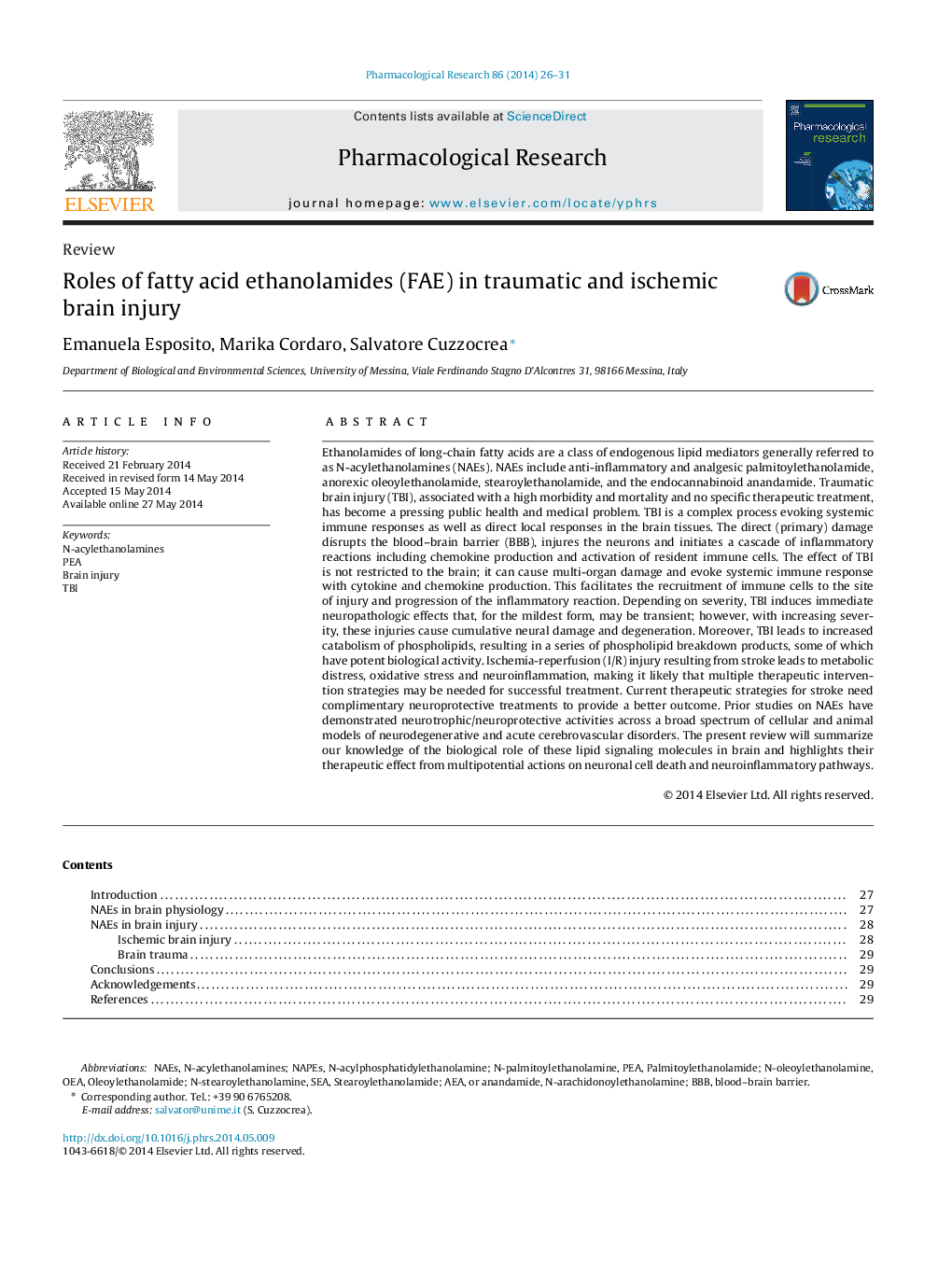| کد مقاله | کد نشریه | سال انتشار | مقاله انگلیسی | نسخه تمام متن |
|---|---|---|---|---|
| 2562724 | 1560853 | 2014 | 6 صفحه PDF | دانلود رایگان |

Ethanolamides of long-chain fatty acids are a class of endogenous lipid mediators generally referred to as N-acylethanolamines (NAEs). NAEs include anti-inflammatory and analgesic palmitoylethanolamide, anorexic oleoylethanolamide, stearoylethanolamide, and the endocannabinoid anandamide. Traumatic brain injury (TBI), associated with a high morbidity and mortality and no specific therapeutic treatment, has become a pressing public health and medical problem. TBI is a complex process evoking systemic immune responses as well as direct local responses in the brain tissues. The direct (primary) damage disrupts the blood–brain barrier (BBB), injures the neurons and initiates a cascade of inflammatory reactions including chemokine production and activation of resident immune cells. The effect of TBI is not restricted to the brain; it can cause multi-organ damage and evoke systemic immune response with cytokine and chemokine production. This facilitates the recruitment of immune cells to the site of injury and progression of the inflammatory reaction. Depending on severity, TBI induces immediate neuropathologic effects that, for the mildest form, may be transient; however, with increasing severity, these injuries cause cumulative neural damage and degeneration. Moreover, TBI leads to increased catabolism of phospholipids, resulting in a series of phospholipid breakdown products, some of which have potent biological activity. Ischemia-reperfusion (I/R) injury resulting from stroke leads to metabolic distress, oxidative stress and neuroinflammation, making it likely that multiple therapeutic intervention strategies may be needed for successful treatment. Current therapeutic strategies for stroke need complimentary neuroprotective treatments to provide a better outcome. Prior studies on NAEs have demonstrated neurotrophic/neuroprotective activities across a broad spectrum of cellular and animal models of neurodegenerative and acute cerebrovascular disorders. The present review will summarize our knowledge of the biological role of these lipid signaling molecules in brain and highlights their therapeutic effect from multipotential actions on neuronal cell death and neuroinflammatory pathways.
Figure optionsDownload high-quality image (99 K)Download as PowerPoint slide
Journal: Pharmacological Research - Volume 86, August 2014, Pages 26–31